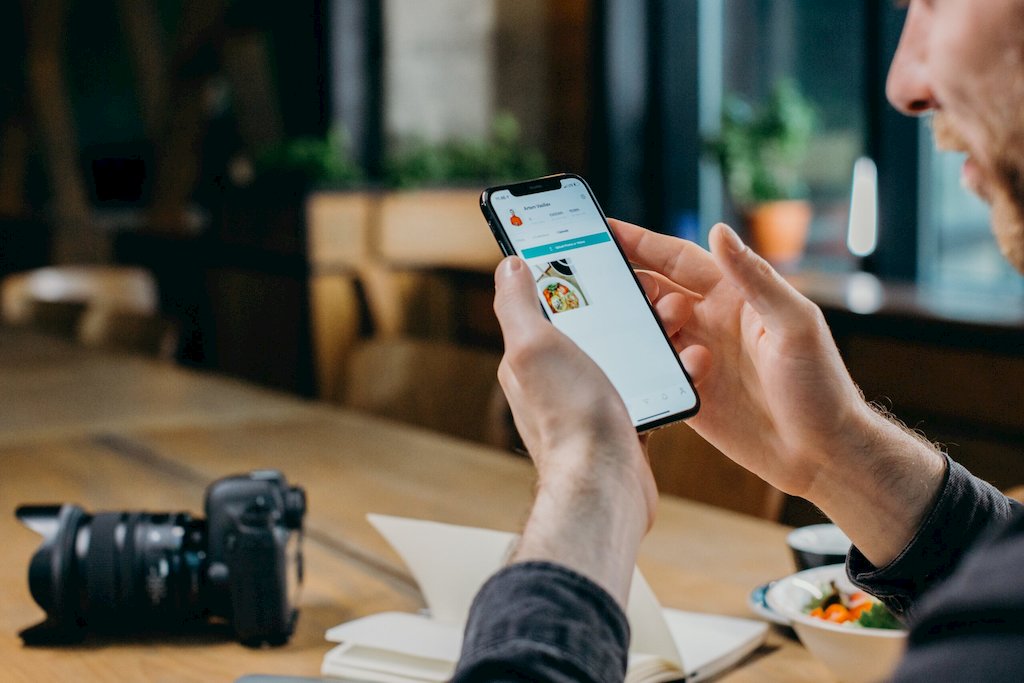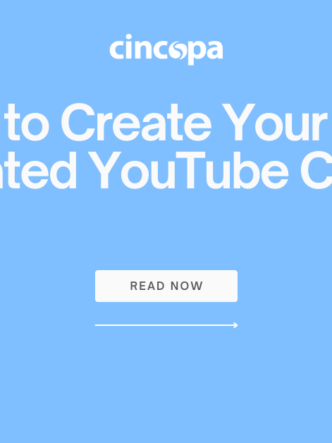User-generated content is one of the most desirable forms of content for many reasons. For one, it offers a personal experience and authenticity as well it provides content while saving time and money.

User-generated content extends the reach of your business and makes leads more likely to trust you and buy your products or services. Around 82% of shoppers say that user-generated content is valuable to them when deciding to buy.
Engage regularly before asking for anything
User-generated content originated mainly due to the existence of engaging social media, where users post videos and photos of brands. The beauty of user-generated content is that it’s organic and represents a brand without any bias. If you want your followers to post content for you, you need to engage with them on a regular basis.
The more you interact with your audience by using conversational captions, liking posts and responding to comments, the more likely they are to trust you and support your business.
Remember to always ask before you share user-generated content. When consumers are mentioned or have their content shared by a brand, it’s often exciting for them, and they don’t require any other reward than the recognition.

Connect with people who believe in the same values as your brand
What are your brand values? Do you create environmentally-friendly products? Do you support a specific charity?
Swimwear brand, Aerie, launched a campaign that provoked plenty of media attention and increased their sales by 20%. The brand decided to stop retouching photos of its models. For every unedited photo that users posted on Instagram of themselves using the hashtag #ArieReal, the company donated a dollar to the National Eating Disorders Association.
Find out what customers are already sharing organically
Analyze what your audience is sharing. If you do this you can find out:
- Who is most likely to share content about your brand?
- What type of content are they sharing? Photos, videos, etc.
- Where are customers sharing from – in store, on a run, with friends?
- What is motivating them to share?
- Where are shares most prevalent? Instagram, Twitter or Facebook?

Using this information will help you to run a data-driven campaign. French fashion house Longchamp found that customers were already organically sharing about their Le Pliage purse, so they decided it made sense to launch a campaign to join in the conversation and generate even more excitement of this iconic product.
Be specific about what you want from your audience
You should not be afraid to ask your users for user-generated content if you’ve built up trust with them. You need to be clear and very specific about what content you’re looking for. If you don’t have clear goals and communicate properly, you may confuse your customers and get the wrong type of content.
Whether you want photos, testimonial videos or reviews, your brand advocates need proper guidance. Check your guidelines and hashtags to make sure you aren’t leaving room for errors or for trolls to take advantage.
Start a hashtag campaign
If your product or service is more difficult to show off visually on a platform like Instagram, you need to be more creative. One way to do this is to start a hashtag campaign. A unique hashtag can describe your brand, identify a lifestyle, promote new product features and more.

Don’t just expect followers to start using your hashtags overnight. Firstly, it might serve you more to create a hashtag that puts the focus on your fans. User-generated content isn’t just about you – it’s about your customers. Secondly, you need to encourage your fans to use your hashtags by placing strong calls-to-action in places where your followers are most likely to see them – within a photo caption, in your bio or a location tag.
Software companies often get users to share photos using hashtags. Buffer uses the #BufferSpaces hashtag, and users share photos of the workspace where they use Buffer for sharing their social media content.
Adobe uses the hashtag #AdobePerspective, and people share the content they’ve created using their products through Adobe’s Instagram channel.
Hold a contest
Hold a contest designed around the interests of your customers. Offer a reward they will appreciate and appeal to their competitive nature.
Design Within Reach held a Champagne Chair Contest that gave their customers the opportunity to exercise their creativity. Fans had to build miniature chairs out of the foil, labels, caps, and corks of no more than two champagne bottles and submit photos. The company saw a huge lift in engagement.
Offer incentives
Social shopping platform Nuji offered discounts as an incentive for sharing its content. The strategy worked and Nuji saw a 730% growth in CTR to retail sites, and an increase of 167% in sales attributed to those clicks.
Incentives are always welcome, especially if users only have to take a simple action to earn them. Small incentives such as discount codes, loyalty points, free samples, or the chance to do the unexpected can help to drive participation.
Samsung Nation rewarded users for watching videos, writing reviews and participating in online forums. They were given badges as they progressed through different levels of achievement.

If you can offer customers the type of incentive they can’t get anywhere else, this is even better. Luxury fashion retailer, Marc Jacobs, gave people a strong incentive to create user-generated content. He decided to cast non-professionals in a modeling campaign. Interested people were asked to post selfies using the hashtag #CastMeMarc to give them the opportunity to be a model in his next campaign.
Host an event
When you host an event, such as a workshop, a webinar or a fundraiser, you can control the environment. Create a hashtag and encourage people who attend to share photos, videos, and comments about the experience.
Start promoting your hashtag before the event takes place to create anticipation. Suggest that contributors may be featured in an upcoming blog post about the event. Send them home with Insta-worthy goodie bags to keep the conversation going.
Encourage customers to leave reviews
The customer review is probably the most basic form of content generated by users, but it can be powerful. Reviews have become more important than ever as few people buy products or services without reading reviews. They want to hear what other customers feel about a product. Never miss an opportunity to encourage customers to leave reviews.
If you’re a service or a restaurant, you can ask customers to leave feedback on your Yelp page. Depending on the category of your Facebook page, fans may be able to write reviews on your page. Send a follow-up email to customers after they make a purchase asking them for their comments.
Highlight customer reviews on your site, and it will encourage other users to write reviews too. FreshBooks features customer testimonials on the homepage. Video testimonials can also be very impactful.

Feature user-generated photos
A report by Photoslurp platform says that user-generated images are 5 times more likely to convert customers as compared to professional or non-UGC images. Reminds us of Aeire again!
E-commerce brands need this type of content to help their shoppers to draw the connection between images, videos, and products. It’s a way to give customers recognition and an on-site gallery of user images helps to attract even more user-generated content.
Wayfair, e-commerce furniture brand asked customers to post photos of the furniture in their homes on Instagram and Twitter using the hashtag #WayfairAtHome. Rather than professionally taken photos, customers can see what the furniture looks like in a real home and get some design inspiration.
A National Geographic campaign with the hashtag #wanderlust inspired countless users to post snapshots of interesting locations and experiences all over the world. They cleverly offered a prize of a Yosemite National Park photo expedition – one that would appeal to their audience and was clearly relevant to the brand.

Use holidays and major events to gain exposure
Running a campaign that ties in with holidays and national events is another great way to encourage user-generated content. Make-up Art Cosmetics (M A C) used the hashtag #SeniorArtistsSlayHalloween and make-up artists from around the world shared photos of their Halloween creations. Many fantastic photos of elaborate creations were shared.
Allow fans to test your latest offerings
If you have already built up some loyal supporters, you can allow them to be involved in beta testing. Give them access to new products, services or new features before releasing them to the general public. They are likely to be excited about the opportunity, and you can ask for feedback in whatever format you choose.
Tap into influencers
94% of marketers believe influencer marketing to be effective. It can deliver 11 times more ROI than standard digital marketing methods.
Social influencers often have huge fan bases. When looking for the right influencers, consider what demographic they cater to and what type of content their fans enjoy. Make sure they operate on the channels your customers use.

You want influencers who will have clout with your target audience and where they’re coming from must be campaign appropriate. Reach out to the right influencer to try your product or service in exchange for sharing on social media.
Conclusion
Successful user-generated marketing campaigns need clear, actionable goals tied to your brand. As seen above, there are numerous ways to increase your user-generated content. Just because user-generated content is fun and creative doesn’t mean that it can’t also be driven by metrics and data. If you want a return on investment, you need to base your campaigns on what you know about your audience to drive serious engagement and get valuable content that achieves your campaign goals.









